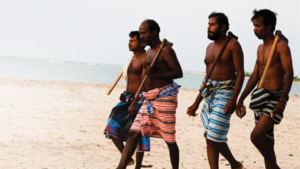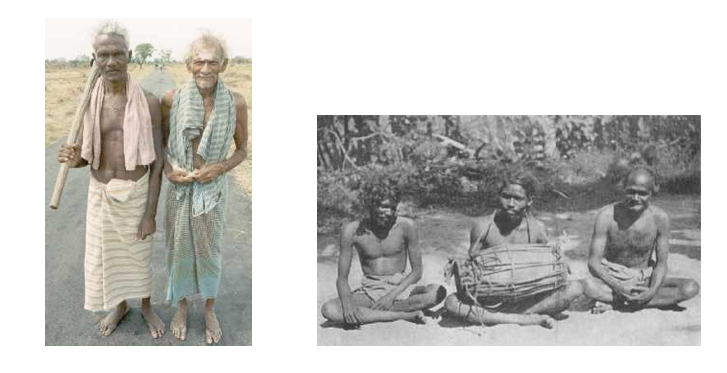Physical Address
23,24,25 & 26, 2nd Floor, Software Technology Park India, Opp: Garware Stadium,MIDC, Chikalthana, Aurangabad, Maharashtra – 431001 India
Physical Address
23,24,25 & 26, 2nd Floor, Software Technology Park India, Opp: Garware Stadium,MIDC, Chikalthana, Aurangabad, Maharashtra – 431001 India

Who are indigenous peoples?
Indigenous Peoples are distinct social and cultural groups that share collective ancestral ties to the lands and natural resources where they live, occupy, or from which they have been displaced. Around the world, there are many different names for Indigenous People, including First peoples, First Nations, Aboriginal peoples, Native peoples, or Autochthonous peoples. They are found all over the world, and currently, there are over 5,000 groups of indigenous people who speak over 4,000 languages. 70% of indigenous people live in Asia and the Pacific, followed by Africa, 16.3% in Latin America, 11.5% in the Caribbean, and 0.1% in Central Asia and Europe. They make up approximately 6% of the global population. Indigenous Peoples’ life expectancy is up to 20 years lower than the life expectancy of non-indigenous people worldwide. Also, they account for about 19% of the extremely poor populations in the world.
While Indigenous Peoples own, occupy, or use a quarter of the world’s surface area, they safeguard 80 percent of its remaining biodiversity. They hold vital ancestral knowledge and expertise on how to adapt, mitigate, and reduce climate and disaster risks. Much of the land occupied by Indigenous Peoples is under customary ownership, yet many governments recognize only a fraction of this land as formally or legally belonging to Indigenous Peoples. Even when Indigenous territories and lands are recognized, protection of boundaries or use and exploitation of natural resources are often inadequate

Indigenous peoples of Sri Lanka
The Veddhas (Wanniyala-Aetto) of Sri Lanka are indigenous people whose ancestry, according to legend, is traceable to the island’s prehistoric inhabitants. Veddhas preserve a direct line of descent from the island’s original Neolithic community dating from at least 14,000 BC. They inhabited the island long before the Sinhalese, and the Tamils arrived. They live mostly as nomadic forest-dwellers in the remote eastern parts of the country. As with many indigenous groups, there’s little evidence to suggest their origins. Archaeologists connect their gene pool to a prehistoric human called Balangoda Man, who lived 48,000-3,800 years ago and was named after the historical sites in the town of Balangoda, where his skeleton was first discovered – 160km from Colombo. Veddas established their settlement in different parts of the country, covering the Uva, North Central, Eastern, and Sabaragamuwa Provinces of Sri Lanka.
Mainly the Vedda community in Sri Lanka is divided into two communities
Forest Veddas mostly live in Mahiyangana (Dambana), Anuradhapura, and Ratnapura, Most of the indigenous Veddas occupied the jungle villages in the Dambana region where the leader Wannya-laeththo lives, and major cultural traditions are practiced and preserved here. Anuradhapura Veddas are descendants of the indigenous community who adopted with religion, language, and traditions of Sinhalese in the province. Ethnically they are connected to Coastal Veddas, who are the Tamil-speaking minority of the Northern region.
This article considers the coastal Vedda indigenous communities and how Climate Change impacted them.
Coastal veddas ( වෙරළේ වැද්දන් / கரையோர வேடர்கள்)
Coastal Veddas predominantly live in many villages of Batticaloa and Trincomalee districts. They occupy a number of settlements in the Tamil zone on the east coast. They exceed in number from the Village Veddas of Bintenne and their wilder neighbors on the borders of Uva and the Eastern Province. This community only consists of around 100 families. Only a few of the older generation still keep their culture and traditions alive to this day.

They are located in Mutur, Kathiraveli, Paalchenai, Vakarai, Panichenkerny, Mankerny, Verugal, Kaluwankerny, Modera, Kaludawalay, Tettantivu , Settipalayam , Mangkadu ,Nakareni and some areas of Valaichenai.
Most of the Veddas were herded into coastal Refugee Camps in Government controlled regions during the late 80s and early 90s. The largest camp is Mankerny. These Vedda folk populated the interior and the coast from Mutur to as far South as Valaichchenai. Today they have been displaced from their ancestral hamlets.
They still gather honey when possible but no longer hunt because their guns were confiscated in the 1980s by the Government. Coastal Veddas are fishermen who are frequently involved in sea fishing.

Problems and Challenges of east Veddas in Sri Lanka
As a tribal community, the Veddas are threatened by modernity, which plays a crucial role in vanishing them as a traditional or cultural group. The Vedda faced much stress over the decades, which needs to be addressed to preserve their tradition, culture, and way of tribal life. The government of Sri Lanka imposed restrictions on forest reservations and land acquisition for huge agricultural extension and irrigation projects, and the internal conflict and civil war also interrupted the traditional way of Veddas’ lifestyle.
The major problem that Veddas face.
Most importantly, there is a global challenge of climate change, which will have a great impact on most indigenous people since they often live in physically isolated, fragile, and harsh environments which may be vulnerable to climate change due to their latitude, topography, distance from the sea, soils quality, etc. Indigenous peoples are the ones at most at risk from the consequences of climate change because of their dependence upon and close relationship with the environment and its resources.
Although the impacts of climate change are regionally specific and will be significant for indigenous peoples in many different ways, indigenous peoples are expected to be disproportionately affected. Indigenous communities are already affected by other stresses.
Some of the consequences of climate change can already be felt, and indigenous peoples across the world have experienced changes due to their sensitivity towards the environment.
Considering coastal Veddas of Sri Lanka, they use village tanks (reservoirs) for farming fish as a main community livelihood activity. The community is in a dry climatic zone where Culture-based fisheries are challenging. The north-eastern tropical monsoon and the weather dynamics in the Bay of Bengal influence the region’s weather. Eastern Sri Lanka gets rain and high winds between October and January and remains dry for the remaining months (especially May through September).
Rice farming is another essential livelihood activity, though unexpected climate changes do not allow Coastal Vedda to farm consistently.
The following are local mechanisms for their protection and development.
International mechanisms to protect the rights of indigenous people
COP15 biodiversity deal is a ‘new era’ for Indigenous-led conservation
In the agreement at COP15, Greenpeace welcomes the explicit recognition of Indigenous Peoples’ rights, roles, territories, and knowledge as the most effective biodiversity protection from the UN biodiversity talks. More cop 15 outlooks can be read here.
Also, without a commitment to safeguarding human rights, the 30×30 target will result in conservation efforts that would lead to Indigenous Peoples and local communities being evicted from their ancestral lands and denied access to critical resources needed to sustain their rights to food, health, and land. When creating protected areas, the free, prior, and informed consent of Indigenous Peoples should be respected. They should be allowed to manage such areas and be provided with the financial resources required to support them.
-With Inputs from Dinesh Balasri –
Comments are closed.
To the climatefactchecks.org admin, Thanks for the educational content!
Dear climatefactchecks.org owner, Thanks for the well written post!